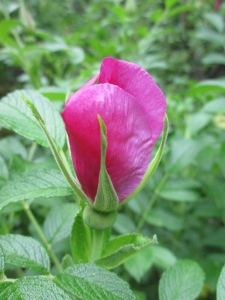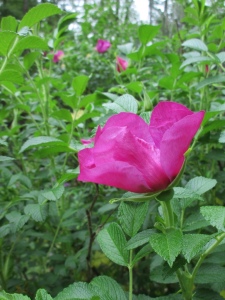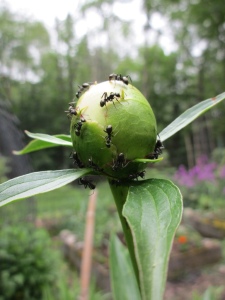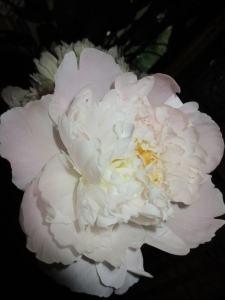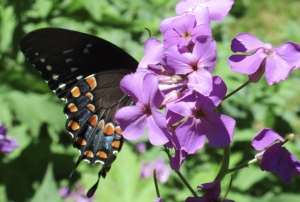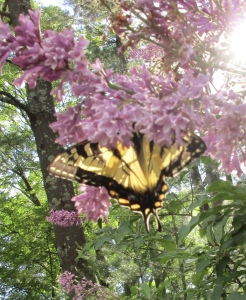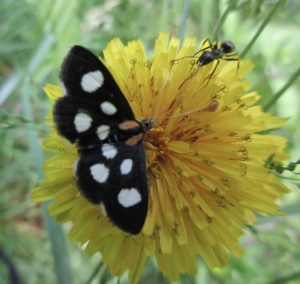The challenges and joys of gardening never cease. Now that the temperature is nearing ninety and the humidity up there as well, I feel like I’m walking through molasses physically and mentally. That said, it has brought to a snail’s pace my gardening work. Prior to the solstice and in between the rainy days, we had clear low humidity days in the 70’s. I worked for as many as eleven hours a day in the gardens, trying to make it to all the beds. ‘Tis a bit like a ship; you start at one end and keep going – I never make it to all my garden beds, try as I might, before the heat slows me down. and I need to revisit the now overgrown beds I had done first. Now the focus is keeping up with watering and weeding. Then there are the challenges of different pests in the garden.
Kitchen Items as Allies
There is a problematic bed next to the stairs out back. I used to have fabulous hollyhocks for many years until they got rust disease that I couldn’t cure. I planted many other things there since, but now there is challenge from the get-go, some creature, perhaps a chipmunk or gopher or vole is making a tunnel in that bed, with a couple of exits. 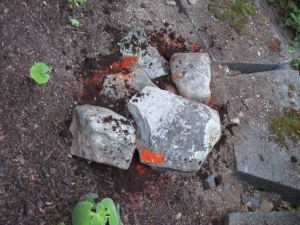
I put cloves of garlic in the holes, along with coffee grinds, then heavy dashes of cayenne pepper with some soil and heavy rocks. A first my rocks weren’t heavy enough and they squirmed out the edges. More cayenne & coffee and heavier rocks. I think I’m now winning. We shall see. For heaven’s sake, I live nest to the forest, there are plenty of other places they can hang. I just saw they are trying a tunnel in another part of the bed. You know I’m going out with garlic, coffee grinds, and cayenne. I’ll find some rocks. I’m going for magnificent hollyhocks again, along with Tithonia, Mexican sunflower.
The leaves of a beautiful Liatris plant were developing lotsa holes. At first I couldn’t ascertain what was causing the problem. Black splotches appeared and ants. I made a mixture of witch hazel and water, then with Q-tips I wiped the weird little black splotches away. They didn’t let go easily. I repeated the process twice more over the next few days until finally the plant is robustly forming its flowers,, splotch free.
With the heat and humidity, I just noticed that the dreaded mildew is starting on the leaves of my red monarda, bee balm, which is just about to open, like mini-fireworks in time for the Fourth of July, my own non-toxic, non-polluting sweet smelling fireworks display.  I use 2 heaping tsps. baking soda with a dash of dis soap in a quart spray bottle. I’ll use it in the early evening, then hose the plants down cause the sun can burn the leaves with the mixture on.
I use 2 heaping tsps. baking soda with a dash of dis soap in a quart spray bottle. I’ll use it in the early evening, then hose the plants down cause the sun can burn the leaves with the mixture on.

